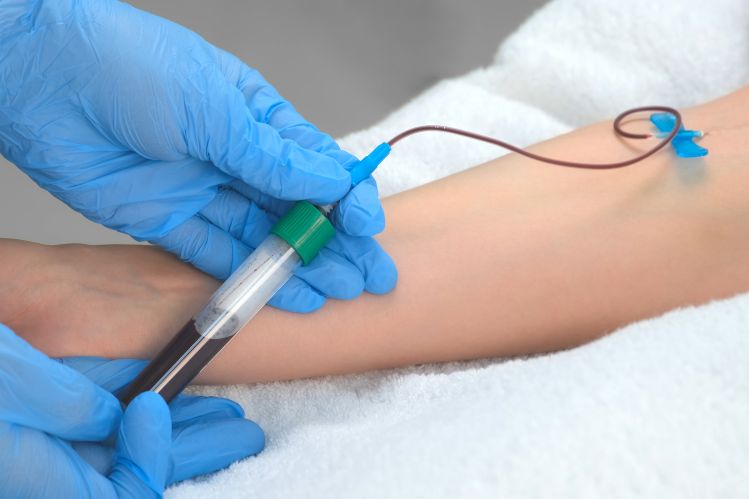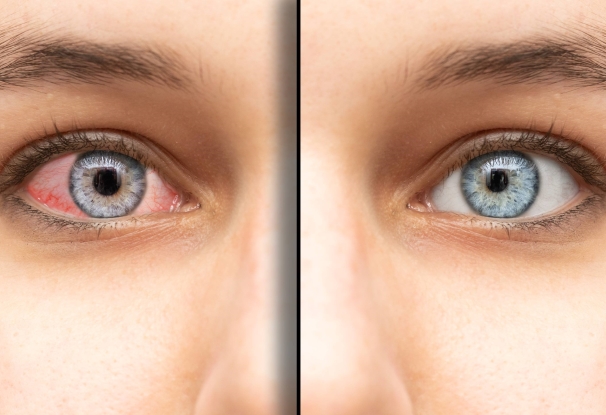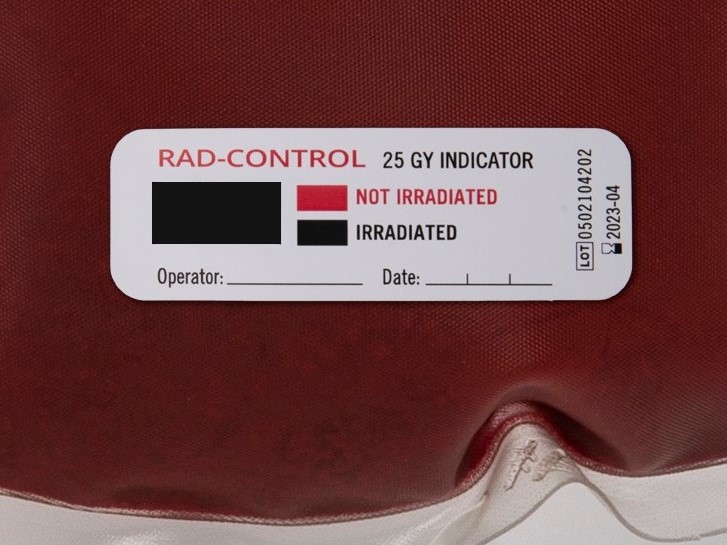Our bodies’ natural tears are essential for providing moisture at the ocular surface of our eyes. They contain antimicrobial and nourishing properties and support our eyes with growth factors, antioxidants, proteins, fibronectin, lipids and vitamins. If the volume and quality of our natural tears is reduced due to infections such as Dry Eye Disease (DED), ocular surface injuries or other medical issues, the ocular surface becomes damaged. This results in often chronically painful, burning eyes. Artificial tears, prescription eye drops, warm compresses, eyelid treatments and other remedies bring initial relief. But they may not solve the problem in the long-term. Natural tears are much more complex than artificial ones. Eye drops made from blood serum are “similar to normal tears”1 and show a high efficacy in therapy with patients suffering from severe ocular surface problems.
“Serum Eye Drops are by nature
non-allergenic, and their
biomechanical and biochemical
properties are similar to normal tears”
„
Why Serum Eye Drops?
Serum Eye Drops are a lacrimal substitute based on a formulation that mimics natural tears. Healing success is founded on the effect of the product’s ingredients, which include substances occurring in the blood serum, such as the epithelial growth factor (EGF), platelet derived growth factor (PDGF), Vitamin A and others.
There are different types of blood-derived eye drops. Autologous serum eye drops are derived from a patient’s own blood serum, and allogenic serum eye drops are provided from screened healthy volunteer blood donors. These can be offered for immediate treatment or for patients who are unable to donate blood, or for patients with anaemia, poor cardiovascular status, or venous access.
“Lomas et al. report the most extensive case series evaluating the impact of the SED on patient-reported outcome measures using the Ocular Surface Disease Index (©OSDI) (Allergan plc, Irvine,CA) validated questionnaire. They show the equal performance of Allogenic SED and Autologous SED. Both Auto-SED and Allo-SED are well tolerated.”3
Platelet-Rich-Plasma (PRP) eye drops are a further blood-derived eye therapy option that can be considered when conventional treatment fails to resolve severe Dry Eye Disease. They require a much shorter preparation time, while “the efficacy and the concentration of epitheliotrophic factors are not inferior to those of autologous serum”.5
How are SED made?
Preparation protocols for Serum Eye Drops vary from country to country and between institutions. The fundamental steps, however, remain the same: Whole blood is collected without anticoalgulant from donors, and must be allowed to clot before processing. The majority of blood banks and hospitals, in particular those processing allogenic serum eye drops, screen donors for infectious diseases beforehand. The blood then coagulates and is centrifuged: the serum is separated from the clotted blood. The extracted serum is then filled in vials or small eye dropper bottles. This is done either in the clean room or with an aliquoting system for serum eye drops. The serum may be filtered before dispensing. However, this may “influence the level of growth factors and cytokines in the final product.”2 Often a diluent – mostly a sterile saline solution – is added. “Most drops are 20% serum, although some patients use 25%, 50%, or even 100% serum drops.”4
The outcome of one full blood donation varies a lot depending on the volume per vial and dilution. In the UK, the count is up to 150 bottles diluted 50% with saline.2
What is the secret of SED?
To heal severe ocular damages such as Dry Eye Disease (DED), Sjögren’s Syndrome or others, lubricating and nutrient properties are necessary. “Commercially available artificial tears alleviate biomechanical trauma caused by dry eye disease but lack biological properties such as nutrients that promote ocular surface renewal and immunological defence.”2
Blood serum lubricates and provides nourishing substances. It contains a large number of healing factors that are present in human tears. Both serum and platelet-rich plasma contain growth factors and vitamins and immunoglobulins, some in higher concentrations than in natural tears. These epitheliotrophic factors are mainly responsible for the therapeutic action in ocular surface pathologies.
When are Serum Eye Drops indicated?
“SED have proven effective for the treatment of complex dry eye disease, in addition to a wide range of clinical conditions causing OSD (Steven-Johnson syndrome, Sjögren’s syndrome, persistent epithelial defects, GvHD, post-LASIK dry eye, neurotrophic keratopathy, diabetes mellitus, superior limbic keratoconjunctivitis, recurrent corneal erosions, aniridic limbal stem cell deficiency) and as supportive therapy for ocular surface reconstruction and stem cell therapy.”2
Severe cases of dry eyes have a major effect on patients’ quality of life, as they suffer extreme pain, sensitivity to light, eye infections, and loss of visual acuity. Injuries such as ocular surface toxicity, as well as chemical, thermal, mechanical or other injuries, and inherited ocular surface diseases, are further examples that demonstrate the wide range of promising SED treatment options.
Serum Eye Drops are usually used as a second- or third-line therapy. If patients fail to achieve adequate relief from traditional treatments, such as prescription eye drops, warm compresses, or eyelid treatments, then SEDs can come into play.
Sources:
1 Autologous serum eye drops for ocular surface disorders ©British Journal of Ophthalmology, 2004 Nov; 88(11).1467-1474
2 Eye (2017), 1-16 © 2017 Macmillan Publishers Limited, part of Springer Nature. All rights reserved 0950-222X/17
3 Parwez Hossain: Reducing the burden of ocular surface disease with serum eye drops, March 30, 2021 © The Author(s), under the exclusive licence to The Royal College of Ophthalmologists
4 Kristine Brennan: Thicker than water: Autologous Serum, Review of Ophthalmology, published 5 November 2016
5 Comparison of epitheliothrophic factors in platelet-rich-plasma versus autologous serum and their treatment efficacy in dry eye disease, Chanatip Metheetrairut et al, Nature Scientific Reports, (2022)12:890
Foto credit: Shutterstock
Authors: Dr. Harald Sekljic, Dr. Clemens Troschl, Lisa Springer









